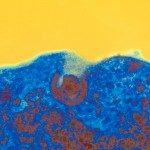Link to Pubmed [PMID] – 25416792
J Epidemiol Community Health 2015 Mar;69(3):272-7
BACKGROUND: Obtaining a comprehensive quantitative figure of the determinants of influenza infection will help identify priority targets for future influenza mitigation interventions. We developed an original causal model integrating highly diverse factors and their dependencies, to identify the most critical determinants of pandemic influenza infection (H1N1pdm09) during the 2010-2011 influenza season.
METHODS: We used data from 601 households (1450 participants) included in a dedicated cohort. Structural equations were used to model direct and indirect relationships between infection and risk perception, compliance with preventive behaviours, social contacts, indoor and outdoor environment, sociodemographic factors and pre-epidemic host susceptibility. Standardised estimates (βstd) were used to assess the strength of associations (ranging from -1 for a completely negative association to 1 for a completely positive association).
RESULTS: Host susceptibility to H1N1pdm09 and compliance with preventive behaviours were the only two factors directly associated with the infection risk (βstd=0.31 and βstd=-0.21). Compliance with preventive behaviours was influenced by risk perception and preventive measures perception (βstd=0.14 and βstd=0.27). The number and duration of social contacts were not associated with H1N1pdm09 infection.
CONCLUSIONS: Our findings suggest that influenza vaccination in addition to public health communication campaigns focusing on personal preventive measures should be prioritised as potentially efficient interventions to mitigate influenza epidemics.

